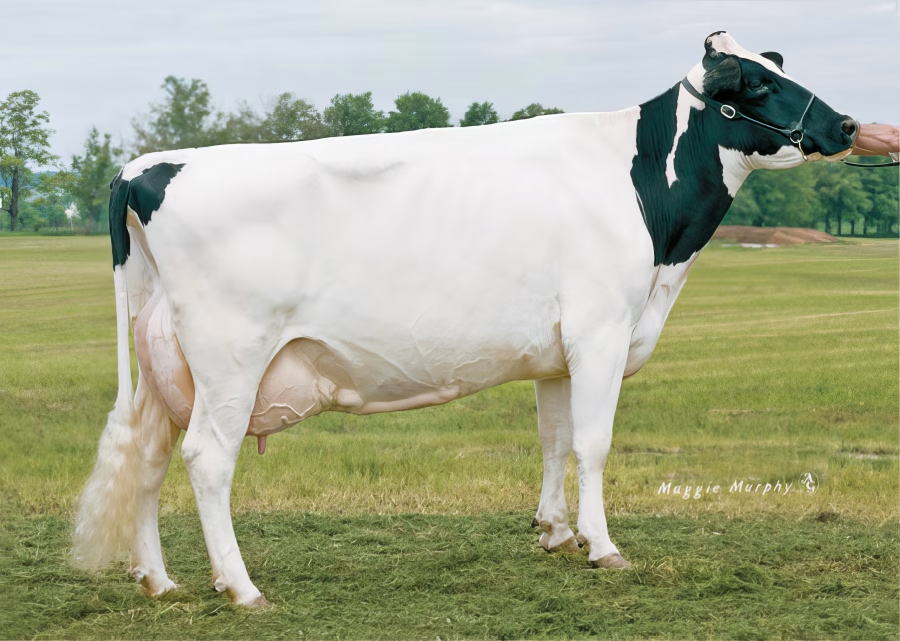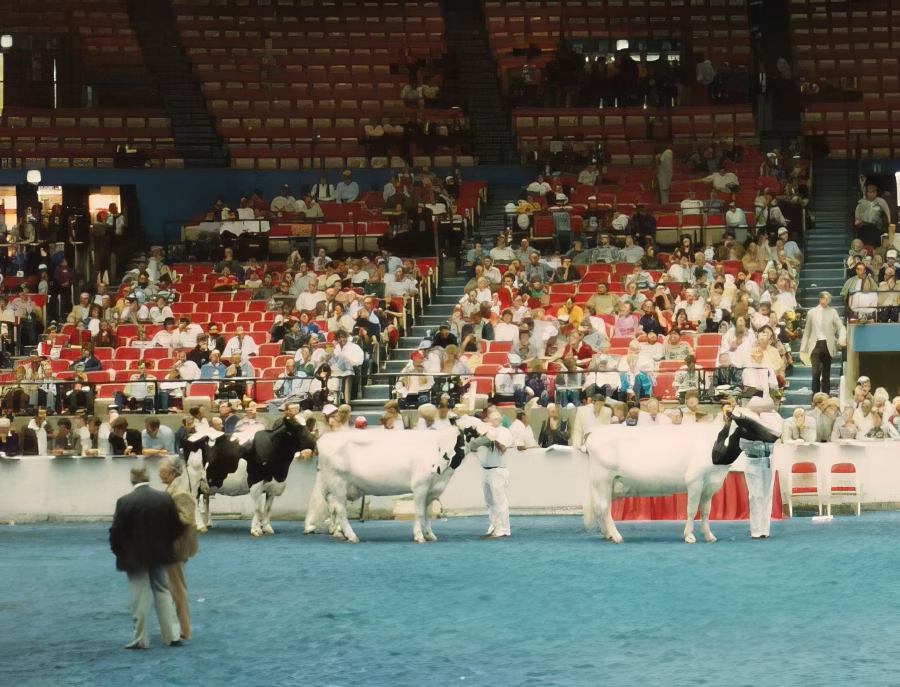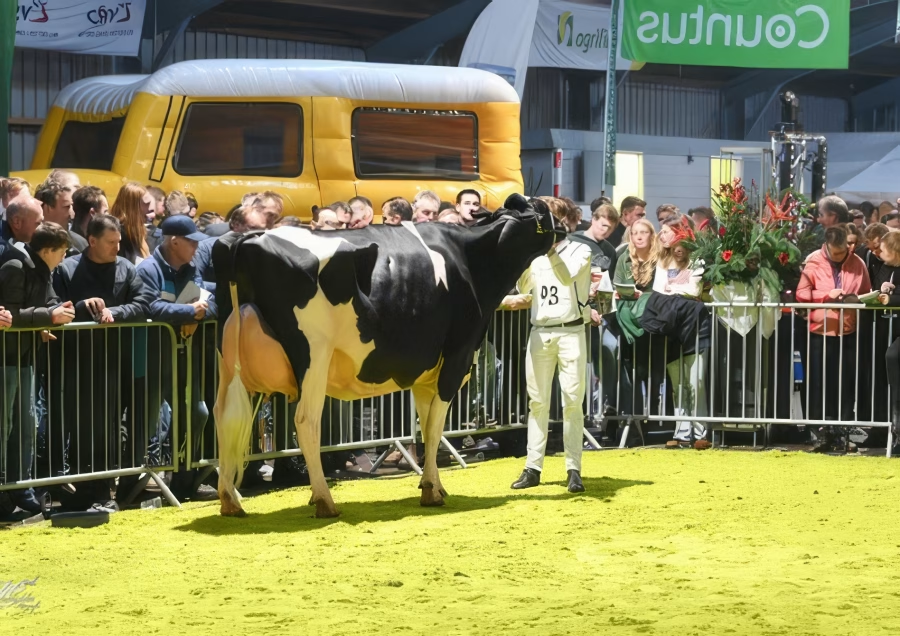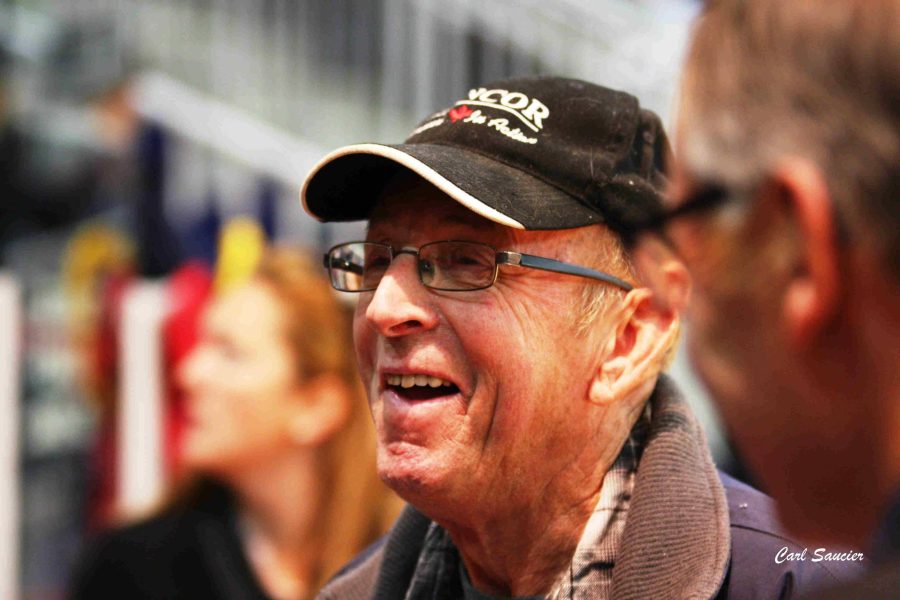Uncover Brookview Tony Charity’s awe-inspiring journey. What transformative steps propelled this extraordinary figure from modest origins to legendary acclaim? Continue reading to discover.

The legendary Brookview Tony Charity heralded as “incredible perfection” and the exemplification of the “True Type in Motion,” carved out an indelible mark upon the chronicles of dairy cattle history. With her stellar accomplishments, she compiled a recorded monument to excellence not soon to be equaled. Her achievements include six superior production records and an astounding tally of nine All-Canadian and All-American titles. Charity was never defeated in class, a feat that speaks volumes about her unparalleled quality and presence in the show ring. Yet, these accolades merely scratch the surface of her illustrious career. Charity’s name is etched in the annals of history as the only female to capture the prestigious Grand Championship honors at the Royal Winter Fair four times, in conjunction with securing the Supreme Championship at Madison an unprecedented four times. Her victories define Charity’s legacy, but the enduring standard of excellence she represents in the world of elite dairy show cattle she indeed was incredible perfection.

Charity’s Beginnings: From Ontario to Ohio
Remarkably, eight of Brookview Tony Charity’s twenty direct dams were bred in the esteemed herds of Wentworth County, Ontario, specifically those of pioneering breeders Samuel Lemon from Lynden and Thomas G. Berry from Hannon. In the mid-1940s, a family member was sold to Arthur H. McKane of Georgetown, Ontario, who bred Charity’s fifth through eighth dams. Among these ancestors, Emeraldale Rag Apple Marie—the eighth dam—stood out, producing 155,365 lbs. of milk and 5,974 lbs. of fat over eleven lactations. Her progeny consistently shone in the show ring. Emeraldale Spartan Molly (GP), Marie’s daughter, was the dam of the celebrated Emeraldale Citation Comet, an All-Canadian and All-American Junior Yearling Bull in 1964. Charity’s sixth dam, a Spring Farm Fond Hope (EX-ST) daughter, was exported to Leaderwood Farm in Lancaster County, Pennsylvania in 1960, establishing the family that would eventually produce Charity.
Greg Briggs, recognizing the potential of this lineage within the Leaderwood herd, acquired the entire lineage for Roger Schug from Monroeville, Ohio. Schug sold Leaderwood Elevation Charm (VG), Charity’s Elevation dam, to Karl and John Havens of Fremont, Ohio. There, she was mated with Kanza Matt Tony (VG-GM), leading to the birth of Brookview Tony Charity.
Schug reacquired Charity as a bred heifer from the Havens, marking the beginning of a new chapter in her compelling story. Upon her calving, which resulted in a heifer calf sired by Conductor, Charity was classified as Very Good at 85 points, earning particular praise for her exceptional mammary system.
By January of the following year, Charity and her daughter had been purchased by Cormdale Farm Inc. in March 1981. At that juncture, Cormdale Farm was a collaboration between Albert Cormier and Bruno Rossetti from Italy. Cormier is famous for discovering and developing cows like C Lauduc Broker Mandy, Skys-the-Limit Claire, and Lylehaven Lila Z, and for being one of the first in the industry to import European semen from the Netherlands into Canada. Cormier co-founded Generations with Dave Eastman, one of Canada’s most successful private A.I. centers now part of the Select Sires Federation.
Although promising and young, Charity faced challenges—most notably, fluid accumulation in her hock joints impacted her appearance. However, she conceived quickly and was poised to calve a second time by March of the subsequent year. Despite the swollen hocks, her resilience shone through as she triumphed in her class at several shows, underscoring her innate quality and potential. Her ability to overcome these challenges is truly inspiring.
A Transformative Decision: Charity’s Remarkable Journey to Hanover Hill
In the fall of 1981, Peter Heffering visited Cormier’s farm in Georgetown, Ontario, to select cattle for the Designer Fashion Sale, the most important sale in the calendar that year, in November. Spotting Charity despite her swollen hock, he recognized her potential. Earlier that year, she triumphed at the Halton Black & White Show, claiming the top spot in the three-year-old class and securing the reserve grand championship.
For Cormier and his partner, selling the cow at a high-profile auction was a promising opportunity to profit, particularly given their concerns over the young cow’s hocks. A noteworthy anecdote from this period highlights the meticulous obligations they undertook. As Peter visited Cormdale towards the end of the summer to inspect all consignments, ensuring the animals reflected the esteemed reputation of the event, he encountered an utterly transformed Charity. Charity’s hocks had notably improved out in the field for summer—no trace of the earlier concerns remained. This level of care and attention to detail is a testament to the dedication of those involved in her care.
Upon seeing this remarkable improvement, Albert suggested he might need to reconsider selling her. That comment, however, prompted a visceral reaction from Peter. Understandably irritated, he pointed out the extensive efforts and resources already committed to advertising the sale and the reputational damage that could ensue should Charity be withdrawn. Recognizing the gravity of Peter’s concerns, Albert promptly retracted his comment, confirmed Charity’s presence in the sale, and never broached the subject again.
In November, Charity commanded a remarkable price of $47,000, leading to her acquisition by Hanover Hill Holsteins in collaboration with George Morgan of Walton, NY. They outlasted a syndicate of Ontario breeders headed by Ken Empey Jr. Two years later, Hanover Hill purchased Morgan’s share in Charity for $250,000 U.S.
1983: The Inception Incredible Perfection
Her calving in March 1982 marked the beginning of a stellar career for the cow affectionately named “The Incredible Perfection.” This marked the beginning of her significant impact on the dairy cattle industry. Charity made history by becoming the first cow to win grand champion at all three U.S. National Shows in a single year and capped the season as the Royal’s winning four-year-old and reserve grand champion. These unique achievements set her apart and left the audience in awe.
That year, Brookview Tony Charity’s illustrious show career began in late April at the New York Holstein Show, where she dominated the 4-year-old class and secured the reserve grand champion title. A week later, she succeeded similarly at the Ontario Spring Show in Stratford. That fall, Charity made breed history at the U.S. National Shows—Eastern National in Harrisburg, PA; Central National at World Dairy Expo in Madison, WI.; and Western National in Fresno, CA.—by becoming the first cow to be declared grand champion at all three in the same year. She was recognized for having the best udder at each show and was crowned Supreme Champion at Madison. At the Royal Winter Fair, she won her class and was named reserve champion by Judge Orton Eby, claiming the Erle Kitchen production trophy. This would mark the only time Charity was ever defeated, with Continental Scarlet-Red 3E-95 GMD being named Grand Champion.

Judges praised Charity’s big, open frame, style, grace, dairyness, balance, and exceptional udder. Her remarkable journey covered an 8,000-mile circuit, culminating in unanimous selections as All-Canadian and All-American 4-year-old. In 1984, Holstein World honored her as the All-Time All-American 4-year-old. Despite her extensive travels, Charity completed an impressive 329-day record as a 3-year-old, producing 21,786 lbs. of milk with 3.8% butterfat, totaling 844 lbs. of fat (200-211).
The long show year, stress, and lack of rest nearly claimed Charity’s life when she calved in 1983. A severe reaction to antibiotics caused her to lose appetite and strength, among other health issues. However, the relentless care from Ken Trevena and Willis Conard of Hanover Hill saved her. Though she skipped the U.S. shows in 1983, she reclaimed her throne in Canada, winning her first 5-year-old and champion titles at the Ontario County and Peterborough Championship Shows. At the Royal Winter Fair, she secured the grand champion rosette, impressing Judge Doug Wingrove with her balanced mammary system, style, and openness of rib. She was unanimously chosen as the All-Canadian 5-year-old. Beyond the show ring, Charity’s lactation records were remarkable, completing a 4-year-old lactation with 37,340 lbs. of milk at 3.5% fat in 343 days, earning a BCA of 267-256-267. That year, she also achieved an Excellent classification mark.
A Triumphant 1984: Charity’s Stellar Return
The year 1984 marked another triumphant chapter for Charity. Competing as a mature cow, she earned grand champion honors at the Stratford Spring Show and the New York Holstein Show. Under Hanover Hill Holsteins’ stewardship, she returned to New York State in June. She achieved a significant milestone: Charity scored Excellent 97, becoming the 21st Holstein in the U.S. to receive this highest distinction in the American type classification system.
Charity calved on July 31, 1984, and two and a half weeks later, she endured the intense heat at the Canadian National Exhibition. Participating in the “Canadian 100” Holstein Show, she emerged as the grand champion with the best udder, marking a historic event commemorating the Holstein Association’s centennial. Despite losing considerable condition early due to heavy milking, her well-balanced udder, clean hocks, and distinctive dairy character secured her second grand champion and Supreme Champion titles at the Madison Show. Returning to Canada, Charity claimed grand champion honors at the Peterborough Championship Show and the Royal under Judge R.F. Brown, winning the best udder and Erle Kitchen production trophy. By year’s end, she was unanimously hailed as the All-Canadian and All-American mature cow.

1985: A Year Brimming with Excitement for Charity
1985 brimming with excitement for Charity. That spring, she reclaimed grand champion titles at the Stratford and New York Shows. However, her most significant headline moment arrived in July.
In the days leading up to the 1985 Hanover Hill Dispersal, Steve Roman developed a keen interest in Charity. Just a week before the scheduled event, Roman contacted Heffering to inquire which of the sale’s two dates Charity would be available. Heffering informed him that Charity was slated for the second day. Roman could not attend that day and requested a rescheduling to the first. Unwavering, Heffering declined to alter the sale timeline. The following day, Heffering was notified by Roman’s secretary that Roman had cleared his schedule to attend on the second day, also requesting an advance herd inspection on the subsequent Wednesday.
On the morning of Roman’s visit, a minor altercation unfolded between Heffering, Trevena, and some of their sales staff, resulting in a decision to terminate one boy’s employment. The rest of the barn crew, showing solidarity, threatened to resign if the termination stood. Heffering, resolute, accepted their resignations, leading to a mass walkout. By evening, Heffering had impressively replaced the entire crew with new hands from the United States. Despite the upheaval and the added pressure of Roman’s imminent arrival, they managed to maintain composure and successfully conducted the farm tour for Roman.
On July 15th and 16th, the Hanover Hill Dispersal at Port Perry farm drew an international crowd of 2,500 eager spectators. As Heffering led Brookview Tony Charity into the sale ring, she was greeted with resounding applause and a standing ovation. Auctioneer Bob Shore set the opening bid at $50,000, and the bidding quickly escalated. In a record-breaking moment for Canada, Charity was sold for $1,450,000 to Romandale Farms Ltd., with Stephen B. Roman casting the winning bid. The primary contender was a syndicate led by Richard Witter, represented by his 14-year-old son, John.
By securing the winning bid, Canada’s premier exhibitors Romandale and Hanover Hill formed a strategic alliance, agreeing to co-own Charity if Romandale prevailed. Romandale’s commitment to acquiring top-tier females to elevate their breeding program spurred them to pursue Charity. Roman’s passion for Charity has ensured his active involvement in her development.
News of Brookview Tony Charity’s sale for over a million dollars quickly captured headlines and stories in major publications, making her name known to both urban and rural communities. Visitors at the Royal and Madison shows frequently inquired about the million-dollar cow.
Charity’s accomplishments in the showring continued throughout the year. She claimed the grand champion title at the Eastern National. She went to Madison, where Judge Fred Foreman praised her extended lactation and named her grand champion. This marked her third win and another Supreme Champion title. In Canada, Judge Lowell Lindsay lauded her as the “greatest cow of the breed,” awarding her grand champion and best udder at the Royal for the third consecutive year. This achievement made her only the sixth cow ever to win the title three times, and her exceptional style, balance, and strong conformation made her a popular choice. Charity also received the Erle Kitchen trophy for her impressive 5-year-old, 3X record of 39,015 lbs. milk. She concluded the year with unanimous All-Canadian and All-American honors.
A Homecoming, Rest, and Unprecedented Triumph: Charity’s Unforgettable Return to the Show Circuit
In 1986, Hanover Hill and Romandale decided to keep Charity at home to undergo an extensive embryo transplant program, resulting in 11 ET calves. Despite ET’s advantages, Stephen Roman and Heffering believed cows should calve naturally. Thus, Charity was bred back and calved easily on March 3, 1987, with a bull calf. When word spread about her excellent condition, many speculated about her return to the show circuit. Heffering noted, “How can you leave a cow home that looks this good and creates the interest she does?”

Charity returned on April 11 at the Stratford Spring Show, securing her third grand championship. By September, she won her third grand champion title at the Eastern National in Harrisburg. At Madison, her impressive show form and dairy character won her titles of grand champion, best udder, and America’s Supreme Champion for the fourth time. Her triumph at the Royal, where she was named grand champion by Judge Jeff Nurse, marked her as the first cow in history to win this honor four times at Canada’s most prestigious show. Closing 1987 with unanimous All-Canadian and All-American mature cow titles, Charity now boasts five All-Canadian and four All-American titles, all achieved unanimously.
Charting the Unrivaled Legacy: Brookview Tony Charity’s Historic Triumphs
Nine times crowned as both All-Canadian and All-American and never once bested in her class, Brookview Tony Charity remains an unparalleled icon in the annals of dairy showring history. Most remarkably, she is the singular female to secure Grand Championship honors at the Royal Winter Fair on four separate occasions, an achievement mirrored by her four-time triumph as Supreme Champion at Madison. Renowned for her exceptional breed characteristics, Charity, a distinguished Holstein owned by Hanover Hill Holsteins and Romandale Farms, clinched the prestigious Supreme Champion title at the World Dairy Expo not just once but in 1982, 1984, 1985, and again in 1987. Since the inception of this accolade in 1970, no other cow has achieved the historic milestone of four Supreme championships, setting Charity apart as an enduring legend in the dairy world.
Charity’s Endearing Elegance and Intelligence

A brilliant Holstein, Charity had undeniable charm. Heffering recalled her demanding that when you opened her box stall door, she would refuse to come out if you didn’t put sand down. She’d stand there and wouldn’t budge. After you had put down the sand, she’d step gracefully into the aisle.
The Bulls of Promise: Innovating Holstein Genetics
Heffering and Roman, Chairman and CEO of Denison Mines Ltd. and Roman Corporation Ltd., were renowned for their business acumen and innovative marketing. In 1986, they explored syndicating six of Charity’s sons through a limited partnership, allowing investors to buy shares in all six bulls as a package. The “Toronto Star” reported, “For the first time in national cow history, Roman and Heffering are enabling Canadian investors to participate in a syndicate marketing the frozen semen of six elite Holstein bulls.” A $3.5 million stock issue was offered at $2500 per share for Charity’s ET sons by “Triple Threat,” “Valiant,” “Starbuck,” and “Tony” through Bay Street underwriters, E.A. Manning Ltd.
Roman declared, “This is definitely a chance to be bullish!” The Charity Genetic Advancement Limited Partnership included a group of investors, Romandale Farms, and Hanover Hill Holsteins, collectively owning shares in these six bulls: Hanoverhill Triple Crown ET, Hanoverhill Hy Class ET, Hanoverhill Challenger ET, Hanoverhill Classic ET, Hanoverhill Hallmark ET, and Hanoverhill Heritage ET. The bulls were housed at St. Jacobs ABC, with worldwide semen distribution to the U.S., England, Japan, and Australia.
The Enduring Legacy of Brookview Tony Charity
Strategic breeding decisions at Hanover Hill highlighted Charity’s genetic prowess and exemplified the farm’s visionary approach to Holstein genetics. She reproduced remarkably well! Her best daughter was Hanover Hill S.W.D. Charity (EX-94-2E-USA), and another standout was Romandale Faith (EX-92-USA) as well as Hanoverhill A Charity (VG), Charity’s Astronaut daughter. But that is not the end of her story. Charity’s legacy is still being written with such descendants as:
Jomargo Goldendreams Cheyenne

Jomargo Goldendreams Cheyenne-RC EX-90 was the 2022 Grand Champion at the Austrian Dairy Grand Prix for Bernard Unterhofer in South Tyrol. ‘Cheyenne came here as a two-year-old and has since improved yearly.’ The Groβpötzl family bred the beautifully balanced Golden Dreams daughter Cheyenne. Her daughter by Sidekick, Jomagro Sidekick Jakarta, was named Junior Champion at that same show. Cheyenne is a Golden Dreams from a Texas-Red then a Kite RC followed by Rubens RC and then Charity.
Sellcrest D Cheeto-Red

Sellcrest D Cheeto-Red, at seven years old, made a notable appearance in Madison in 2022, capturing attention with her quality and late maturity. Owner Trish Brown from East-Colt Dairy, Wisconsin, reflected on her journey: “We didn’t realize Charity’s legacy was so remarkable when we bought Cheeto in 2018.” That year, Cheto won 1st place in Junior Two-Year-Old At the Ohio Spring Show. She would be the Grand Champion of the Mid-East Fall Red & White Show 2020. Also, be the winner of the Six-Year-Old class at the 2022 Wiscon State Red & White Show.
Cheeto, a daughter of She-Ken BW Dunkin, traces her lineage back to Charity through a notable pedigree. Hanover-Hill Raider Char EX-90 laid the foundation for remarkable Charity successes in Europe via Craigcrest Holsteins in Ontario. Martin Rübesam from Wiesenfeld Holsteins in Germany initiated this legacy, though Char, one of his Sale of Stars purchases, could not be imported into Germany. Consequently, she was housed at Craigcrest, leading to the birth of Charity 504 EX-94, later sold to Giessen Holsteins in the Netherlands. Rübesam has maintained Charity descendants for nearly thirty years at Wiesenfeld, including WFD Courtney, the Junior Champion of Grünen Tagen 2022. Reflecting on Charity’s impact, Rübesam recalls, “I have seen Charity several times, for example, in her pen at Hanover Hill. Charity’s confirmation inspires me to this day. There was so much balance! She was certainly not tall compared to other show cows at the time. In that respect, she was even ahead of her time than we often realize.”
Het Uilenreef Charity 16

Charity 16 EX-91 is a proud descendant of the illustrious Brookview Tony Charity EX-97 lineage. This distinguished heritage places her at the core of the Dutch Giessen Charity branch, highlighting her significance. During her first lactation, the three-year-old Charity 16 achieved an impressive maximum score of VG-89 (VG-89 FR & MS), affirming her exceptional quality. Neppelenbroek secured a genuine show-ring dynasty with Charity 16, as she garnered multiple honors in a single day. This Undenied daughter clinched the Intermediate Championship and Best Udder and triumphed over her six-year-old herd-mate Hellen EX-90 to win the Grand Championship at the 2022 Neppelenbroek Holstein Show. She would also go on to win 2nd place in the intermediate class at the 2022 Holland Holstein Show. Charity is Undenied from a VG-86 Jedi, then VG-89 Goldwyn, followed by EX-91 Duplex and a VG-88 Stormatic from an EX-94 Starleader, then EX-90 Raider from an EX-94 Valiant out of Charity.
The Bottom Line
Charity’s rise to fame was due in no small part to the dedication of Peter Heffering and the Hanover Hill team: Willis Conard, herd manager; Ken Trevena, farm manager; Judy Hesse, administrative assistant; and others who devoted countless hours to her care.
Karl and John Havens, her breeders, closely monitored her victories at the Royal and Madison. Karl Havens praised Hanover Hill and Romandale for their stellar promotion of Charity and never regretted selling her. He noted that the move brought attention to the Brookview herd and visitors. Charity was part of Brookview’s All-American Best Three Females in 1984-85, embodying what Havens and others deemed a “super cow.”
Peter Heffering, who has worked with notable cows like Johns Lucky Barb and JPG Standout Kandy, sees Charity as closest to perfect in conformation. He appreciates her head strength, chest width, balance, and power. Her exceptional loin and rear udder width make her a standout in the show ring.
Brookview Tony Charity is cherished and admired by those in the Holstein community. Her achievements have earned her a place as one of the greatest cows of all time. To the dairy world, she remains “Incredible Perfection.”
Key Takeaways:
- From Ontario to Ohio: Charity’s early years laid the foundation for her remarkable career, showcasing her potential and fortifying her resilience.
- Transformative Decisions: Her move to Hanover Hill was a pivotal moment, catalyzing her rise to prominence within the competitive realm of dairy cattle.
- Stellar 1984: Charity’s triumphant return in 1984 underscored her dominance and set new standards in the show circuit.
- Exciting 1985: A year filled with anticipation and achievements, cementing her status as a top-tier contender and genetic marvel.
- Unforgettable Return: Charity’s homecoming was not just a rest but a resurgence, leading to unprecedented victories and accolades.
- Unrivaled Legacy: Her historic triumphs and genetic contributions have left an indelible mark on the Holstein breed.
- Endearing Elegance: Charity was celebrated for her elegance and intelligence, traits that set her apart and endeared her to both judges and enthusiasts.
- Genetic Innovation: The promise of her progeny, particularly through bulls like Sellcrest D Cheeto-Red, Het Uilenreef Charity 16, and Jomargo Goldendreams Cheyenne, continues to innovate and push the boundaries of Holstein genetics.
- Enduring Legacy: Brookview Tony Charity’s impact is profound, with her legacy persisting through the continuous success of her offspring and the admiration of the dairy community.
Summary:
Brookview Tony Charity’s life story is a compelling narrative of exceptional achievements and transformative moments that have etched an indelible mark on the Holstein breed. From her humble beginnings in Ontario to her various resurgences and undeniable dominance in show circles, Charity’s journey is peppered with notable milestones and influential decisions that highlight her significance. Her legacy extends beyond individual accolades, encompassing a profound impact on Holstein genetics and inspiring succeeding generations of bovine excellence. Charity’s elegance, intelligence, and resilience are celebrated through her descendants, such as Sellcrest D Cheeto-Red and Het Uilenreef Charity 16, which continue to embody her remarkable traits. As we reflect on her storied career, it becomes evident that Charity’s influence transcends the annals of dairy history, leaving a lasting heritage that underscores her unparalleled contributions to the field.
Learn more:
















